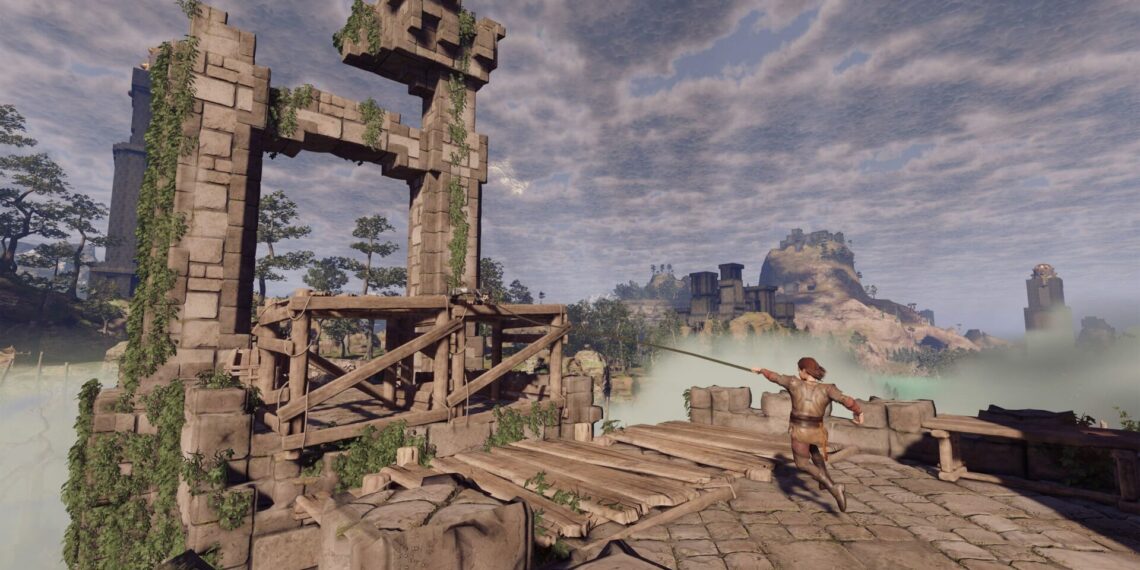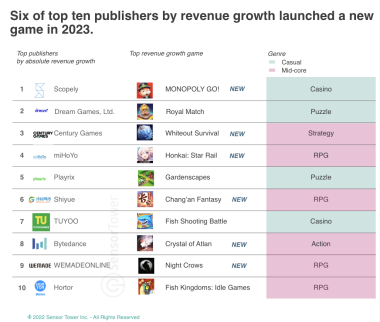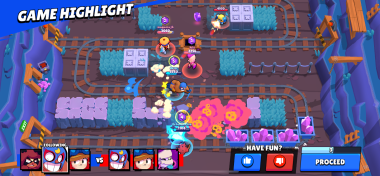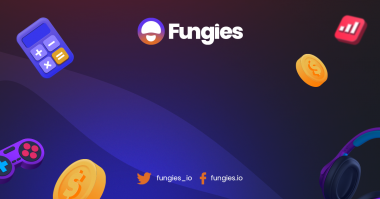Creating your own NFT Marketplace to buy, sell, and store digital assets has never been easier. With the emergence of blockchain technology and non-fungible tokens (NFTs), entrepreneurs have recognized the potential of this innovative asset class.
Here are 10 steps to help you create your own NFT marketplace:
1. Do Your Research
An important first step is to research competitors in the NFT space and understand what they’re doing right or wrong. Understanding the current market trends will help you develop an effective strategy for launching your own platform.
Here is a list of top 10 NFT (Non-Fungible Token) marketplace platforms:
- OpenSea – OpenSea is the largest NFT marketplace, allowing users to buy, sell, and discover unique digital assets.
- Rarible – Rarible is an NFT marketplace and creator platform that offers features such as custom pricing, recurring payments, and revenue sharing.
- SuperRare – SuperRare is a high-end NFT marketplace that features some of the most valuable and rare digital art.
- Bored Ape Yacht Club (BAY) – Bored Ape Yacht Club is a popular NFT marketplace for collecting and trading unique digital apes.
- NBA Top Shot – NBA Top Shot is a platform for buying, selling, and trading officially licensed NBA collectibles as NFTs.
- Foundation – Foundation is an NFT platform that offers users a simple and streamlined experience for buying, selling, and discovering digital assets.
- Art Blocks – Art Blocks is a platform that allows artists to sell unique and limited edition NFTs directly to collectors.
- MakersPlace – Makers Place is an NFT marketplace that showcases the work of emerging artists, photographers, and graphic designers.
- Axie Infinity – Axie Infinity is a blockchain-based platform where players can buy, sell, and trade unique creatures called Axies.
- Nifty Gateway – Nifty Gateway is an NFT platform that partners with celebrities and brands to release limited-edition collections of digital assets.
Please note that this list is not exhaustive and the popularity and ranking of these platforms can change over time. The NFT (Non-Fungible Token) market is relatively new and rapidly evolving, so it’s difficult to predict long-term trends with certainty.
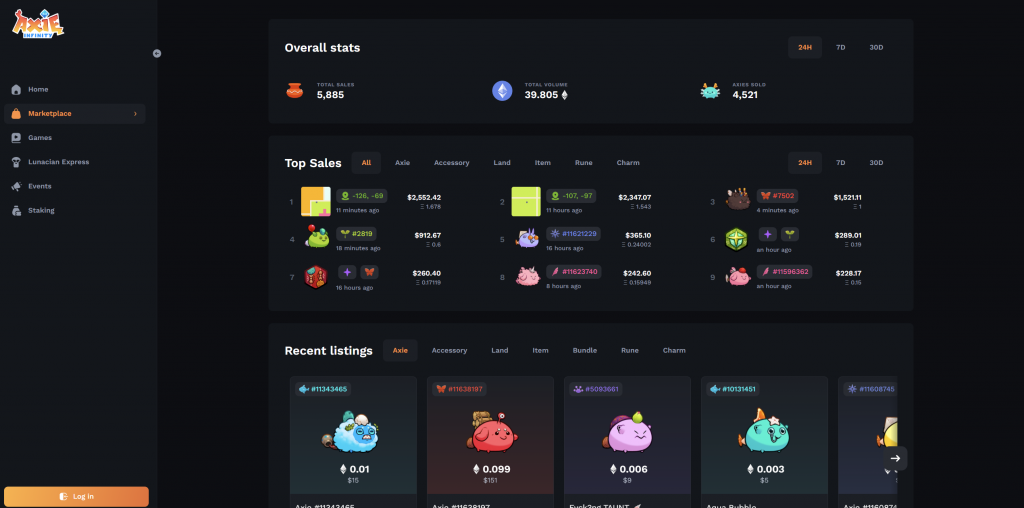
However, here are some current market trends for selling NFTs:
- Growing Popularity of NFT Art: NFT art has seen a surge in popularity in recent years, with many artists and collectors exploring the use of NFTs to authenticate, sell, and trade unique digital artworks.
- Gaming and Collectibles: The use of NFTs in gaming and collectibles is also growing, with platforms like Axie Infinity and NBA Top Shot seeing significant success.
- Increasing Adoption by Celebrities and Brands: Celebrities and brands are also exploring the use of NFTs to sell limited-edition merchandise, merchandise experiences, and other unique digital assets.
- Rising Interest in DeFi and Yield Farming: NFTs are also being integrated into the DeFi (Decentralized Finance) and yield farming ecosystems, offering new opportunities for investment and monetization.
- Increasing Value of Unique Assets: The value of unique assets, such as rare and one-of-a-kind digital art and collectibles, is rising as more people seek to own and trade these assets.
It’s important to keep in mind that the NFT market is still in its early stages and it’s likely that new trends and uses for NFTs will emerge in the coming years.
2. Plan Your Marketplace
Once you have a solid understanding of the market, create a plan for your marketplace that outlines goals, features, and key stakeholders. Creating an NFT marketplace requires a great deal of knowledge and expertise to ensure the platform is secure and efficient. It also needs to be built with user-friendly features that make it accessible for everyone. There are several frameworks available for developing an NFT marketplace, such as Ethereum, IPFS, Stellar, EOSIO and Hyperledger. Each of these platforms offer unique advantages for different use cases depending on the type of NFTs being created or exchanged.
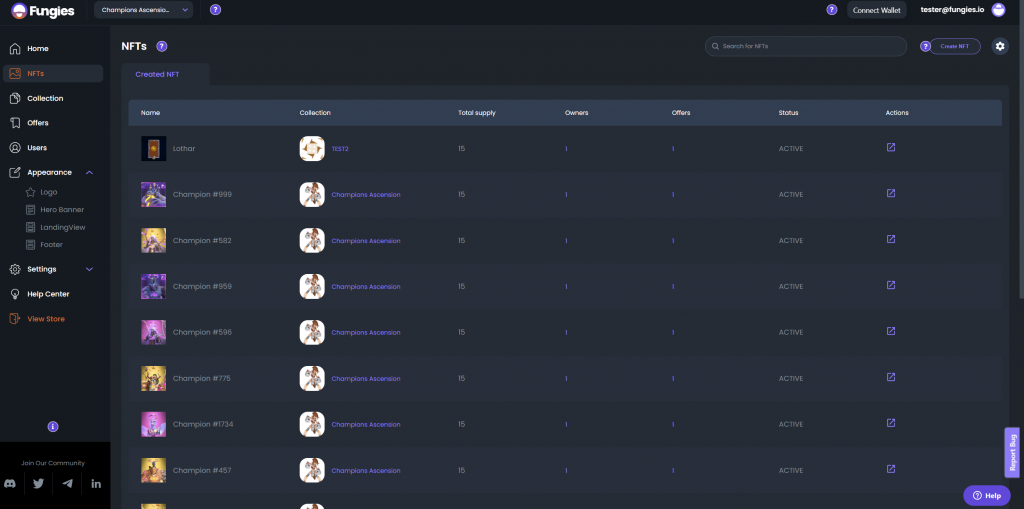
When creating your own NFT marketplace, you’ll likely need assistance from a specialized nft marketplace development company that understands the technology used in building such a platform. They should be knowledgeable about blockchain networks and their associated protocols as well as experienced in integrating smart contracts into the platform. It’s also important to ensure that the development team is up to date on the latest security best practices and able to deploy robust measures for protecting user data.
Finally, the design of your NFT marketplace should be intuitive and easy to use, allowing users to easily browse through available items, create their own listings, make payments, and more. The architecture should be designed with scalability in mind so that the platform can handle high transaction volumes without any issues. Additionally, you’ll want to consider features like automated auctions and support for digital asset wallets.
Here are 5 development frameworks for creating NFT marketplaces:
- React.js – A JavaScript library for building user interfaces, allowing for the creation of fast, scalable, and responsive NFT marketplaces.
- Ruby on Rails – A web application framework written in Ruby, offering a robust and scalable platform for building NFT marketplaces.
- Django – A high-level Python framework for web development, offering a wide range of tools and features for building NFT marketplaces.
- Laravel – A PHP web application framework, offering a comprehensive platform for building NFT marketplaces with a strong focus on security and performance.
- Meteor – A full-stack JavaScript framework, offering real-time data updates and a simplified development experience for building NFT marketplaces.
And here are 5 development languages for creating NFT marketplaces:
- JavaScript – A high-level, multi-paradigm programming language widely used for web development, making it a popular choice for building NFT marketplaces.
- Ruby – A dynamic, interpreted, and object-oriented programming language well suited for building NFT marketplaces.
- Python – A high-level programming language with a large ecosystem of libraries and tools, making it a popular choice for building NFT marketplaces.
- PHP – A server-side scripting language widely used for web development, making it a popular choice for building NFT marketplaces.
- Solidity – A contract-oriented, high-level programming language for writing smart contracts on the Ethereum blockchain, making it a popular choice for building NFT marketplaces on the Ethereum network.
It’s worth noting that these frameworks and languages are not the only options available, and the best choice will depend on the specific requirements and goals of each NFT marketplace project.
Creating an effective NFT marketplace requires a combination of technical skills as well as user-centric design principles that make it easier for everyone involved. With careful planning and the right development team, you can create a successful platform that meets the needs of your users.
These are some of the most popular software development architecture frameworks for building NFT marketplaces, but the best choice will depend on the specific requirements and goals of each project.
3. Set Up Your Infrastructure
Decide which blockchain network you’ll use for your marketplace and set up the infrastructure accordingly. You’ll also need a website, domain name, hosting plan, SSL certificate, payment gateway, and more to get started.
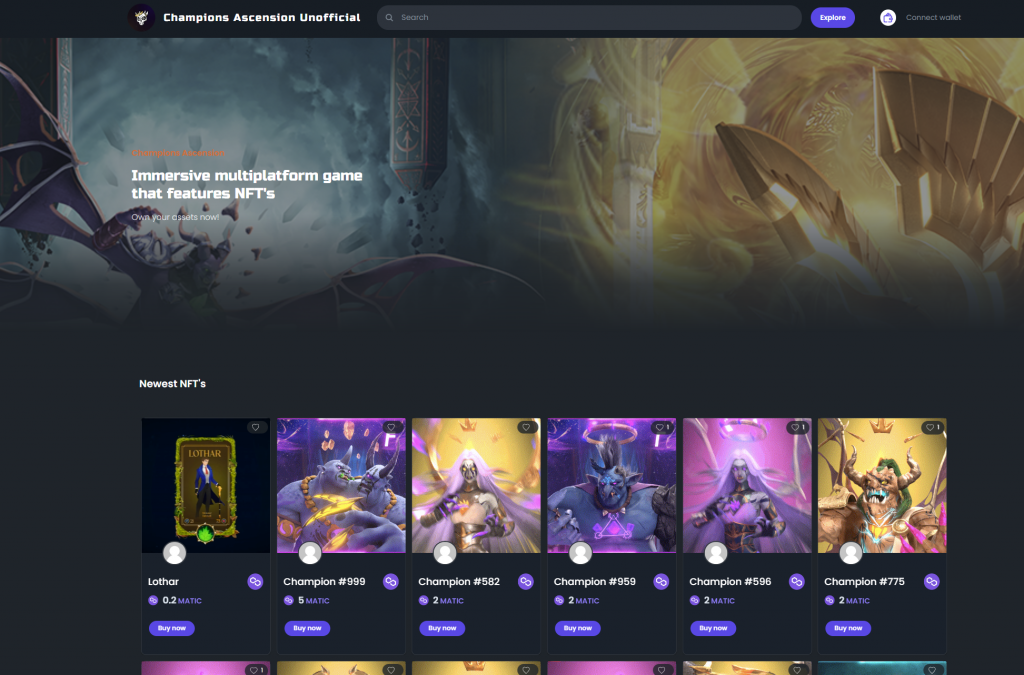
When developing an NFT marketplace, the most popular software development architecture frameworks are:
- Microservices Architecture: A microservices architecture involves breaking down a large application into smaller, independent services that can be developed, deployed, and maintained independently. This approach allows for greater flexibility and scalability in building and evolving an NFT marketplace.
- MVC (Model-View-Controller) Architecture: MVC is a design pattern used in software engineering that separates the representation of information from the user’s interaction with it. This allows for a clean separation of concerns, making it easier to develop, maintain, and evolve an NFT marketplace.
- Event-Driven Architecture: Event-driven architecture involves building systems that respond to events and trigger actions in response. This approach can be useful for building NFT marketplaces that need to handle real-time updates and events, such as changes in the marketplace’s state or new transactions.
- Serverless Architecture: Serverless architecture involves building and running applications and services without having to manage infrastructure. This can make it easier to build and operate an NFT marketplace, as well as reduce costs and improve scalability.
- Blockchain Architecture: When building an NFT marketplace, a blockchain architecture is essential to ensure the security and immutability of the NFTs being traded on the platform. This can involve using an existing blockchain platform, such as Ethereum, or building a custom blockchain specifically for the NFT marketplace.
4. Identify Partners
Select partners such as artists, galleries or other platforms that will help bring in new users to your marketplace. Once you have a reliable NFT marketplace development company that provides excellent customer service, the next step is to start bringing partners on board to help promote and sell your products.
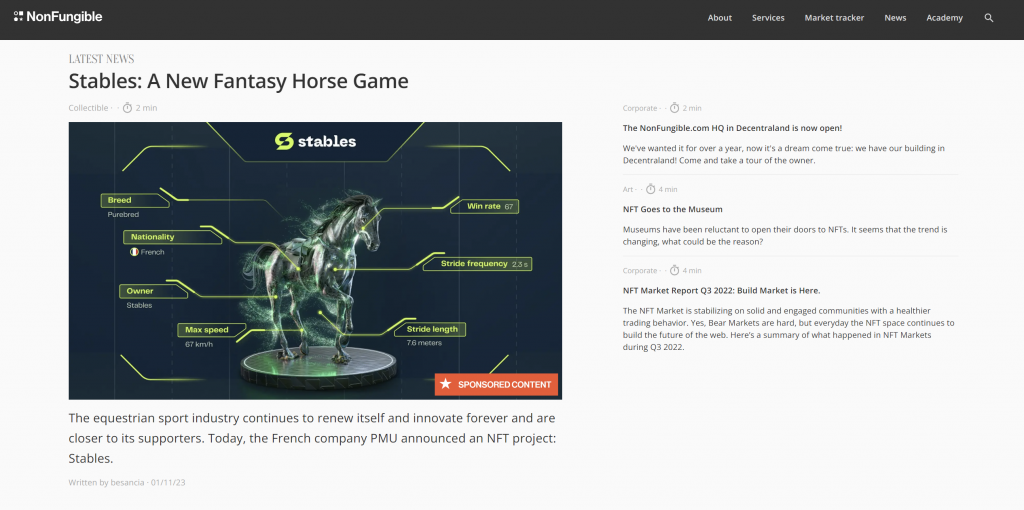
There are several partners that can help to promote your own NFT marketplace and increase sales, including:
- Artists and Creators: Partnering with artists, musicians, and other content creators can help to bring new assets and customers to your NFT marketplace. By offering them exclusive distribution deals, promoting their work, or even commissioning them to create new assets for your platform, you can increase visibility and drive sales.
- Influencers: Utilizing influencer marketing can help to reach new audiences and drive sales for your NFT marketplace. This can involve partnering with popular influencers in your target market to promote your platform, or offering incentives for influencers to promote specific assets.
- Media Outlets: Partnering with media outlets, such as blogs, podcasts, and news websites, can help to increase visibility for your NFT marketplace. This can involve providing them with exclusive content or access, or offering incentives for promoting your platform.
- Event Organizers: Partnering with event organizers, such as music festivals or art fairs, can help to increase visibility and drive sales for your NFT marketplace. This can involve sponsoring events, offering exclusive content, or even hosting events of your own.
- Other NFT Marketplaces: Partnering with other NFT marketplaces can help to increase visibility and drive sales for your own platform. This can involve exchanging assets or offering cross-promotion opportunities, such as co-branded marketing campaigns or referral programs.
- Blockchain Platforms: Partnering with blockchain platforms, such as Ethereum, can help to increase visibility and drive sales for your NFT marketplace. This can involve integrating your platform with the blockchain, using their infrastructure, or promoting your platform through their channels.
These are just a few of the partners that can help to promote your own NFT marketplace and increase sales. The key is to identify potential partners that align with your target market and goals, and to develop mutually beneficial relationships.
Here are some other tips for doing this effectively:
- Reach out to industry influencers – Influencers can be great advocates of your platform so make sure to reach out and try to find those who fit with your brand’s values. You could offer incentives such as commission or free product trials in exchange for their support.
- Utilize social media platforms – Social media is a great tool for connecting with potential customers and partners, so use it! Create engaging content such as helpful articles, videos or giveaways which should help drive more people towards your nft marketplace.
- Create a referral program – If you want to get more people interested in your platform, why not create an incentive-based referral program? This way, your existing partners can help bring in new ones by offering rewards for referrals.
- Have fun and offer interesting events – Offering entertaining activities such as contests or giveaways is a great way to increase brand loyalty and keep customers engaged with your NFT marketplace.
By following these tips and partnering up with the right influencers, you should be able to attract more customers and increase sales on your nft marketplace!
5. Design & Develop Your Platform
Work with an experienced NFT development company who can create a custom platform to meet your needs. This will likely involve creating smart contracts on the blockchain network of choice and designing a user-friendly interface for buyers and sellers to interact with each other.
6. Test & Debug
Once the platform is developed, make sure to thoroughly test and debug it before going live. This will help ensure that your platform is secure and reliable for users.
7. Launch & Promote
After everything has been tested, you’re ready to launch your marketplace! Create a marketing strategy to promote your platform on social media or get in touch with influencers who can spread awareness about your new NFT marketplace.

Here are some strategies for promoting your own NFT marketplace to increase sales:
- Build a Community: Building a community around your NFT marketplace is a great way to generate interest and drive sales. This can involve hosting events, offering exclusive content, and fostering discussions on social media or forums.
- Partner with Artists and Creators: Partnering with artists, musicians, and other content creators can help to bring new assets and customers to your NFT marketplace. This can involve offering them exclusive distribution deals, promoting their work, or even commissioning them to create new assets for your platform.
- Utilize Influencer Marketing: Utilizing influencer marketing can help to reach new audiences and drive sales for your NFT marketplace. This can involve partnering with popular influencers in your target market to promote your platform, or offering incentives for influencers to promote specific assets.
- Offer Promotions and Discounts: Offering promotions and discounts can help to incentivize customers to make their first purchase and continue using your NFT marketplace. This can include offering limited-time discounts, running contests, or offering special promotions for customers who refer friends to your platform.
- Optimize Your Website: Optimizing your NFT marketplace website can help to improve visibility and drive sales. This can involve making sure your website is easy to use, mobile-friendly, and optimized for search engines, as well as improving the overall user experience.
- Utilize Social Media: Utilizing social media platforms, such as Twitter, Instagram, and Facebook, can help to reach new audiences and drive sales for your NFT marketplace. This can involve creating a social media presence, posting regularly, and engaging with customers and followers.
- Offer a Referral Program: Offering a referral program can help to drive sales and attract new customers to your NFT marketplace. This can involve offering incentives, such as discounts or rewards, for customers who refer their friends to your platform.
These are some of the strategies you can use to promote your own NFT marketplace and increase sales. It’s important to experiment with different approaches and find what works best for your specific platform and target market.
8. Monitor & Improve
Keep an eye on key metrics such as traffic, engagement, user satisfaction, transaction volume and more over time to figure out what works best for your customers and adjust accordingly.
9. Respond To User Feedback
Stay in touch with users to understand their needs and concerns, then make the necessary changes to ensure your platform is meeting those needs.
10. Keep Growing
As you continue to grow your user base, add new features and services that keep up with market trends and provide a superior experience for customers.
With these 10 steps, you can create an efficient NFT marketplace that meets the needs of all stakeholders involved. Be sure to work with experienced developers who specialize in blockchain technology in order to get the best results possible. Good luck!
